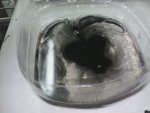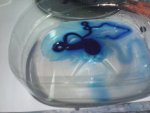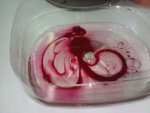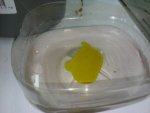I've found an interesting article describing easy way to Test Your Offset Printing Ink For Bleed
I got curious and made same test with our ink and fountain mix and got embarrasing result:




Ink has broke down in about 5 minutes (exept yellow – that took 15 min).
So question(s) are: am i doing something wrong? Is it a right way to test ink/fount compatibility? Do you know any other way to test ink/fount compatibility?
I got curious and made same test with our ink and fountain mix and got embarrasing result:




Ink has broke down in about 5 minutes (exept yellow – that took 15 min).
So question(s) are: am i doing something wrong? Is it a right way to test ink/fount compatibility? Do you know any other way to test ink/fount compatibility?














